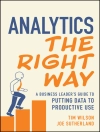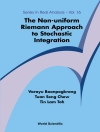A state-of-the-art introduction to the powerful mathematical and
statistical tools used in the field of finance
The use of mathematical models and numerical techniques is a
practice employed by a growing number of applied mathematicians
working on applications in finance. Reflecting this development,
Numerical Methods in Finance and Economics: A MATLAB?-Based
Introduction, Second Edition bridges the gap between financial
theory and computational practice while showing readers how to
utilize MATLAB?–the powerful numerical computing environment–for
financial applications.
The author provides an essential foundation in finance and
numerical analysis in addition to background material for students
from both engineering and economics perspectives. A wide range of
topics is covered, including standard numerical analysis methods,
Monte Carlo methods to simulate systems affected by significant
uncertainty, and optimization methods to find an optimal set of
decisions.
Among this book’s most outstanding features is the integration of
MATLAB?, which helps students and practitioners solve relevant
problems in finance, such as portfolio management and derivatives
pricing. This tutorial is useful in connecting theory with practice
in the application of classical numerical methods and advanced
methods, while illustrating underlying algorithmic concepts in
concrete terms.
Newly featured in the Second Edition:
* In-depth treatment of Monte Carlo methods with due attention paid
to variance reduction strategies
* New appendix on AMPL in order to better illustrate the
optimization models in Chapters 11 and 12
* New chapter on binomial and trinomial lattices
* Additional treatment of partial differential equations with two
space dimensions
* Expanded treatment within the chapter on financial theory to
provide a more thorough background for engineers not familiar with
finance
* New coverage of advanced optimization methods and applications
later in the text
Numerical Methods in Finance and Economics: A MATLAB?-Based
Introduction, Second Edition presents basic treatments and more
specialized literature, and it also uses algebraic languages, such
as AMPL, to connect the pencil-and-paper statement of an
optimization model with its solution by a software library.
Offering computational practice in both financial engineering and
economics fields, this book equips practitioners with the necessary
techniques to measure and manage risk.
Inhaltsverzeichnis
Preface to the Second Edition.
From the Preface to the First Edition.
PART I. BACKGROUND.
1. Motivation.
2. Financial Theory.
PART II. NUMERICAL METHODS.
3. Basics of Numerical Analysis.
4. Numerical Integration: Deterministic and Monte Carlo
Methods.
5. Finite Difference Methods for Partial Differential
Equations.
6. Convex Optimization.
PART III. PRICING EQUITY OPTIONS.
7. Option Pricing by Binomial and Trinomial Lattices.
8. Option Pricing by Monte Carlo Methods.
9. Option Pricing by Finite Difference Methods.
PART IV. ADVANCED OPTMIZATION MODELS AND METHODS.
10. Dynamic Programming.
11. Linear Stochastic Programming Models with Recourse.
12. Non-Convex Optimization.
PART V. APPENDICES.
Appendix A. Introduction to MATLAB Programming.
Appendix B. Refresher on Probability theory and Statistics.
Appendix C. Introduction to AMPL.
Index.
Über den Autor
PAOLO BRANDIMARTE is Professor of Quantitative Methods for Finance and Logistics at Politecnico di Torino in Italy. He is the author of several publications, including five books, on the application of optimization and simulation to diverse areas such as production management, telecommunications, and finance. Dr. Brandimarte has extensive teaching experience in engineering and economics faculties, including master’s and Ph D-level courses.












